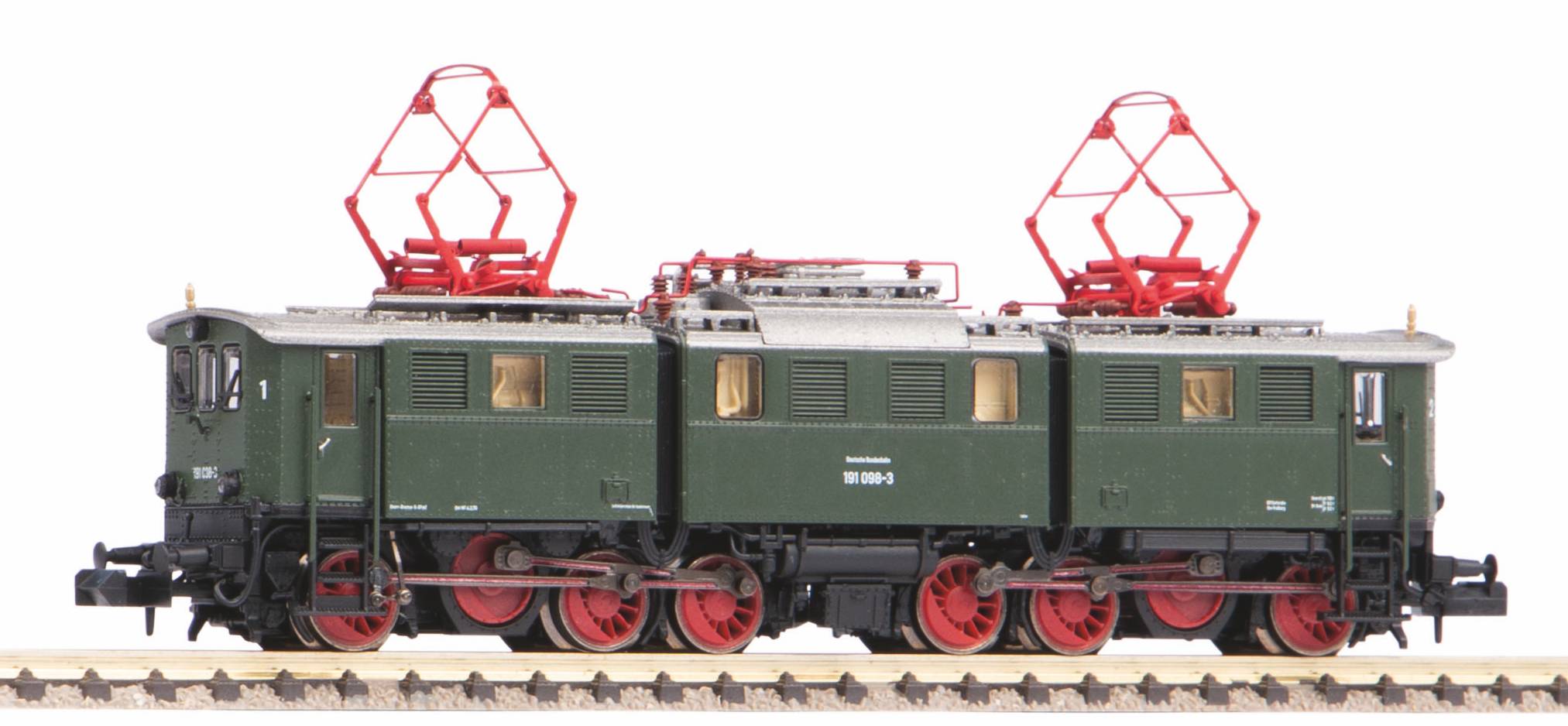N electric locomotive class 191 #40540
19.01.2022 N electric locomotive class 191 #40540
The 191 rolls up! The Class 191 rod locomotive as an N model from PIKO

40540 Electric locomotive class 191 DB era IV MSRP 270,00 €
40541 Electric locomotive/Sound class 191 DB era IV MSRP 380,00 €
The advantages of the models in key points
- Completely new construction
- Digitally switchable lighting in the driver's cab
- Fully modelled roof garden
- Filigree etched windscreen wipers
- First production model of the E 91.9 on a scale of 1:160
- Solid technology at the state of the art
- Impressive detail design from the undercarriage to the roof
- Outstanding price-performance ratio
» The model in the PIKO Webshop
Some information about the prototype and model
The heavy freight locomotives of the class E 91, later class 191, are among the most distinctive German electric traction vehicles. The high recognition value of the locomotives delivered by Krauss and WASSEG from 1925 onwards results from two driven vehicle parts with Winterthur inclined rod drive and the middle section mounted in between, which accommodates the transformer. Of the 30 vehicles initially ordered, 16 machines were delivered to the Bavarian group administration, the remaining 14 examples went to the Silesian network of the Deutsche Reichsbahn. In 1927, a repeat order of twelve locomotives was placed, which were additionally equipped with an electric brake and a larger axle spacing. The three vehicle bodies also differed externally from the previously delivered machines. In the 1930s, the locomotives were redistributed so that they could also be used from Stuttgart and Ulm. After the Second World War, the vehicles that remained in the GDR were no longer used, but the Bundesbahn modernised its 17 examples and continued to use them as 191 until 1975.
Our prototype: Locomotive 191 098-3
PIKO has perfectly captured the incomparable E 91.9 and transferred it to 1:160 scale. The constructive symbiosis of outstanding model realisation and excellent driving characteristics distinguish the new development. The locomotive follows proven design principles: A motor housed in the middle section is connected to the two outer axles and the dummy shafts via cardan shafts and worms. The coupling rods provide the drive to the four other axles. One wheel of the middle wheel set is fitted with a traction tyre to increase the tractive power. More impressive than the technology, however, is the level of detail on the chassis. If you let your gaze wander further, the sharp engravings of the housing, paired with a very fine printing, catch the eye. The outer impression is rounded off by the filigree current collectors and the complete representation of the roof area. All lines were made free-standing and are mounted on replicas of the insulators true to the prototype. The model has a light change in LED technology with red tail lighting. The driver's cab and engine room lighting can be switched as additional lighting functions. The central circuit board of the locomotive has a Next18 interface, it makes the retrofitting of a digital decoder child's play.
With the class 191, PIKO has once again raised the bar for detail design in N scale, from which a striking and exciting prototype such as this ellocomotive dinosaur benefits enormously.
19.01.2022 Produktmanagement


















